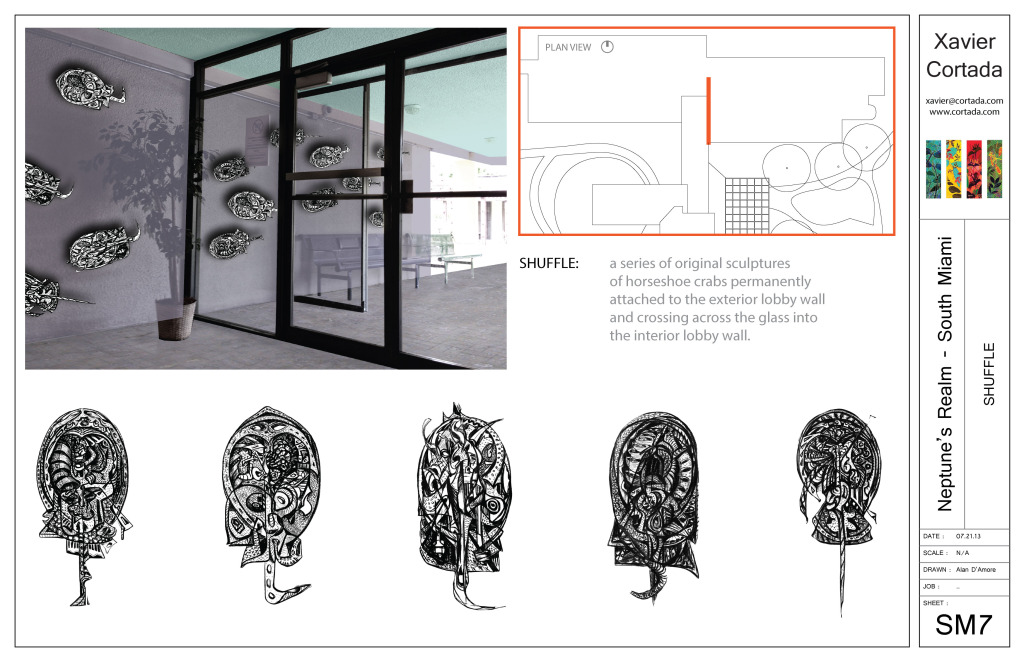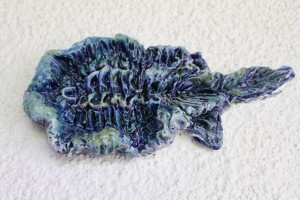BACK TO: SOUTH MIAMI PLAZA | BAS RELIEF
Main | About
In this work, Cortada marches 15 horseshoe crabs from the outer wall, across a glass wall and doorway and into the inner lobby of the building. Inside, Cortada’s smalltooth sawfish swims along the seagrass. Above, beneath a skylight, his sea stars filter light, as if shining down through the waves. These creatures are part of a parade of marine animals flowing through the site– including an octopus and seahorses.
 Xavier Cortada, “Horseshoe Crab March,” ceramic, 2013
Xavier Cortada, “Horseshoe Crab March,” ceramic, 2013
A public art project at South Miami Plaza (Miami-Dade Housing Authority), Miami, FL
Artist’s Statement
South Miami references some of my earlier work. Ten years ago, I prepared an exhibit showing my connection to Biscayne Bay. It was called XL, which is the Roman numeral for forty. I remember drawing five 6′ tall horseshoe crabs with charcoal on canvas. The fourth I completed while I was still 39; The fifth, the day I turned 40. They were distorted, gestural – seen from the inside out. They hung prominently at the entrance of my studio.
Ten years later, I return to the same motif. But use clay as the medium. At the entrance doorway of the South Miami Plaza, I’ve placed 15 horseshoe crab sculptures. The animals march on, march inside, march forth. They greet you as you walk into the building and lead you into the lobby.

Because of the way these creatures march, they are perfect to put at the entrance of this building. Like those who live here, the horseshoe crabs continue moving forward. The residents, now in their later years, continue to move forward; continue to be inspired, to put one foot in front of the other.
Horseshoe crabs are considered living fossils; they trace their origin back 450 million years.
Their blood plays an important role in medicine. Certain properties in their blood allow us to detect bacterial endotoxins in pharmaceuticals and medical devices that contact blood or cerebrospinal fluid.
The copper found in their blood gives it a blue color.
I painted them in blue, acknowledging their important role today.
Each horseshoe crab has distinct, deeply textured features. In my studio I made each sculpture by hand, using high fire porcelain clay, and taking great pride in them. I remembered that in my youth, once I got beyond fearing them, I would gently hold them in my hand at the water’s edge, turn them upside down and be fascinated by their textured undersides.
Because of their unique anatomy, they stick out in my memory, and in that of many others who have visited our beaches.
Once you follow them into the lobby you find yourself admiring two important art pieces. One represents a species that is close to extinction, the sawfish. The other, the sea star, makes us ponder the interconnectedness of all living things.